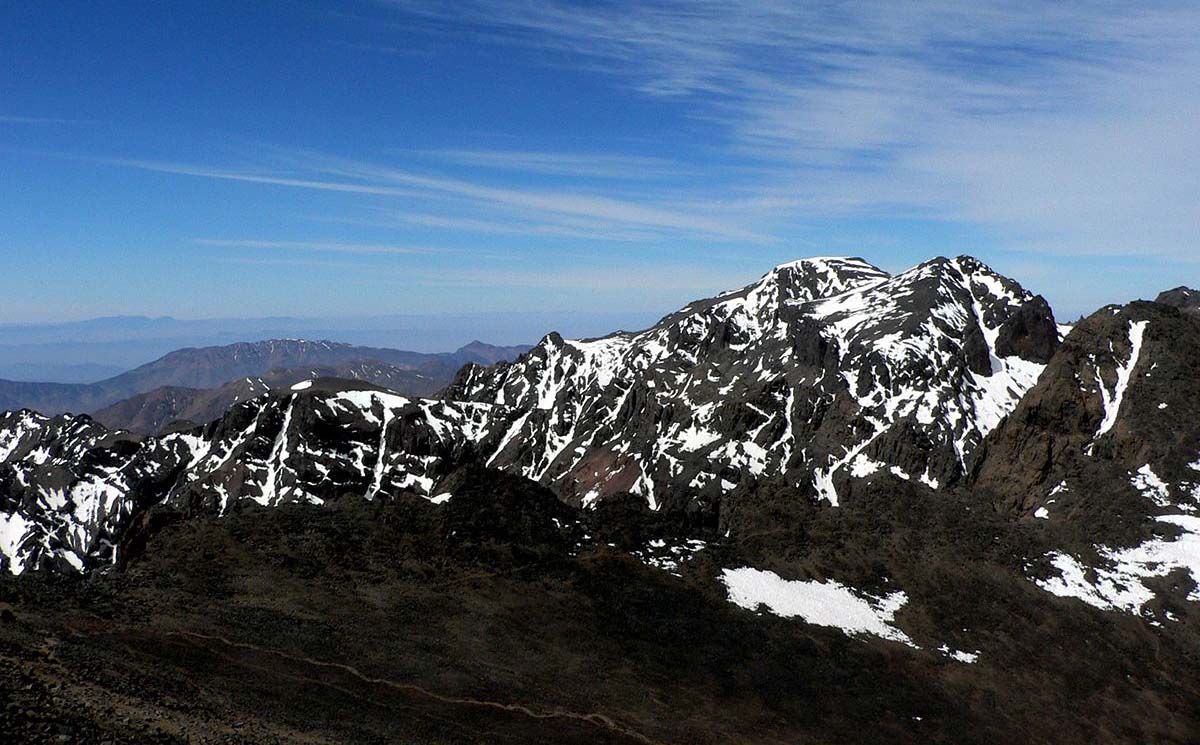Towering as a majestic backbone across North Africa, the Atlas Mountains are an adventurer’s dream and a window into Morocco’s ancient soul. This isn’t just a mountain range; it’s a vibrant tapestry of stark, stunning landscapes, challenging trails, and the warm, enduring culture of the Berber people. If you’re looking to swap the bustle of Marrakech for fresh mountain air and authentic cultural encounters, the Atlas Mountains are waiting for your trek.
The Thrill of the Trek
Trekking in the Atlas offers a variety of routes for all skill levels. From gentle day hikes through lush valleys to multi-day expeditions up North Africa’s highest peaks, there’s a path to challenge and reward every hiker.
- Jebel Toubkal: For the serious mountaineer, the ascent of Jebel Toubkal ($4,167\text{ m}$), the highest peak in the Atlas and North Africa, is an exhilarating, multi-day endeavor. It typically begins in the village of Imlil and requires a good level of fitness, but the panoramic views from the summit are absolutely breathtaking.
- The Valleys: For a more relaxed experience, explore the lower slopes and verdant agricultural valleys like the Ourika Valley or the Aït Bouguemez Valley (The Happy Valley). Here, you’ll hike past terraced fields, ancient walnut groves, and cascading waterfalls, often with a view of snow-capped peaks in the distance.
- Best Times to Go: The ideal trekking seasons are spring (April to May), when the mountains are covered in wildflowers, and autumn (September to October), when the temperatures are mild. Winter brings snow, offering a different, colder challenge, while summer can be intensely hot at lower elevations.
A Glimpse into Berber Village Life
What makes an Atlas Mountain trek truly unique is the immersion into the lives of the Imazighen (Berber people), the indigenous inhabitants of Morocco. Their culture is inextricably linked to the mountains, and their hospitality is legendary.
- Village Stays: Opting for a stay in a local gîte (traditional mountain lodge) or a homestay offers a powerful cultural exchange. You’ll eat authentic, slow-cooked meals like a hearty tagine or a couscous feast, and share sweet mint tea with your hosts.
- Traditional Architecture: Wander through villages made of earth and stone, where houses cling precariously to the hillsides. Observing the traditional way of life—from the donkeys carrying goods to the communal bread ovens—provides a profound sense of connection to history and the rugged landscape.
- The Human Element: Hire a local guide. They are not just navigators; they are storytellers and custodians of the land. A local guide ensures your safety, supports the local economy, and unlocks doors to cultural experiences you would never find on your own.
Essential Tips for Your Atlas Adventure
- Respect Culture: Dress modestly, especially when passing through villages, and always ask permission before taking photos of people.
- Pack Layers: The weather can change dramatically from day to night and from low to high altitude. Bring warm layers, rain gear, and sturdy hiking boots.
- Hydrate: Carry plenty of water, especially during warm months.
- Local Currency: Bring Moroccan Dirhams (MAD) for buying snacks or crafts in the villages, as credit cards are not accepted in remote areas.
The Atlas Mountains offer more than just a physical challenge; they offer an escape and an encounter.

